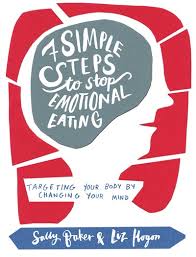

Therapists Sally Baker and Liz Hogon understand that many women have a totally understandable fear of some aspects of birth – whether it’s the thought of pain, of things going wrong or of just not knowing ‘what to do.’ They have selected their seven top tips for you to consider in advance of the big day to help empower you to have the birth experience you desire and deserve.
1. Think positively
Emile Coue was a famous French hypnotist who coined the phrase now known as Coue’s Law – ‘Whenever there is a contest between the conscious mind and the imagination, the imagination will always win.’ Therefore, the more you focus on a positive, life-affirming experience of giving birth, the more likely this will be the outcome of your experience.
2. Speak up
Be clear about your birth preferences. This includes who you really want to be present at the birth. Women can often feel obliged to rely on just having their partner present when in actual fact, they would really value the support of a trusted friend or relative as well. This is the time to voice your preferences.
3. Be open and flexible
Women are often encouraged to compose a detailed birth plan which can lead to concrete expectations. When reality diverts to Plan B, or even Plan C, it is easy to feel like a failure. It can be a positive process to build your birth plan, while at the same time acknowledging that whatever happens, you will be OK.

4. Have self-belief
Women have given birth since the dawn of time. You are part of this amazing, and powerful continuum. You too can do this. Take this as your mantra and repeat it to yourself regularly.
5. Visualise
Rehearse visualising your body being relaxed and open. Take an image that works for you, perhaps a gorgeous lotus flower unfurling in the sun. Whenever you have a few moments to spare, close your eyes and imagine this effortless transformation taking place.
6. Strengthening your ‘No’
From the day you tell people you are pregnant, the nay-sayers can target you with their exaggerated horror monologues of their own birth experiences. The majority of women have easy and positive experiences of labour but they are not so inclined to keep reliving their stories. Interrupt the scare mongers by calmly and assertively stating your refusal to listen. In many ordinary circumstances, women can find it difficult to say ‘No’. If you recognise this in yourself, then it is useful to practice strengthening your ability to say no in your everyday life so that it becomes easier, and easier for you to state what you want. Strengthening this ability to say no with clarity can be immensely helpful in facilitating your having the type of birth you desire. You will find it is easier for you to speak out when you feel it is necessary.
7. Be calm
Anxiety and panic releases the hormone adrenalin, which is known to increase the pain receptors in the body This can potentially make your birth experience more challenging than it needs to be. In preparation, note down your imagined fears around your impending birth, so that your negative thinking is not allowed to escalate in an out-of-control way.
 About the authors
About the authors
Sally Baker (@eatingstop) and Liz Hogon often work with women to release their fears around giving birth. Although every woman faces this time with her own unique perspective and expectations Baker and Hogon in their clinical practice have observed several core issues common to many expectant mothers. They are the co-authors of the book Seven Simple Steps to Stop Emotional Eating (Hammersmith Books).
When working with clients, Sally and Liz use a mix of therapeutic approaches to dispel birth fears, change negative thinking and reinforce positive outcomes. Many of the techniques are easy to learn as self-help tools. The most effective methods they have found to help clients get in touch with unhelpful thoughts is EFT (Emotional Freedom Technique). EFT uses spoken reminder phrases and gentle finger tapping following a set pattern of meridian points mainly around the face and upper body. The meridian points originate from the ancient Chinese practice of Acupuncture but instead of treating physical symptoms, this technique focuses on revealing and releasing negative emotions.
Another of their methods is PSTEC (Percussive Suggestion Technique). It also works brilliantly to help discover the underlying reasons for self-sabotaging behaviour around food. PSTEC turns down, or breaks the emotional attachment to previous negative experiences, leaving people feeling peaceful and unencumbered by their past. PSTEC is an interactive audio process where the listener taps their fingers to a set of complex rhythms while focusing on a negative memory, event or emotion. For instance, women who have experienced a previous difficult birth experience can face the prospect of giving birth again with great trepidation. PSTEC works to remove the emotions attached to those past memories to release them, so that although the memories remain, they are not as emotionally charged.
To learn and apply these techniques for yourself there is a free fact sheet and audio download available for both of these techniques.

 About the authors
About the authors